 |
 |
| Korean J Intern Med > Volume 30(4); 2015 > Article |
|
Abstract
Background/Aims
Methods
Results
Conflict of Interest
References
Figure┬Ā1
Kaplan-Meier survival analysis of patients with hematologic malignancies and immunocompetent controls matched for their Acute Physiology and Chronic Health Evaluation II scores. The survival distribution of the two groups was compared using a log-rank test. Median survival was 8.00 days versus 13.00 days, respectively.
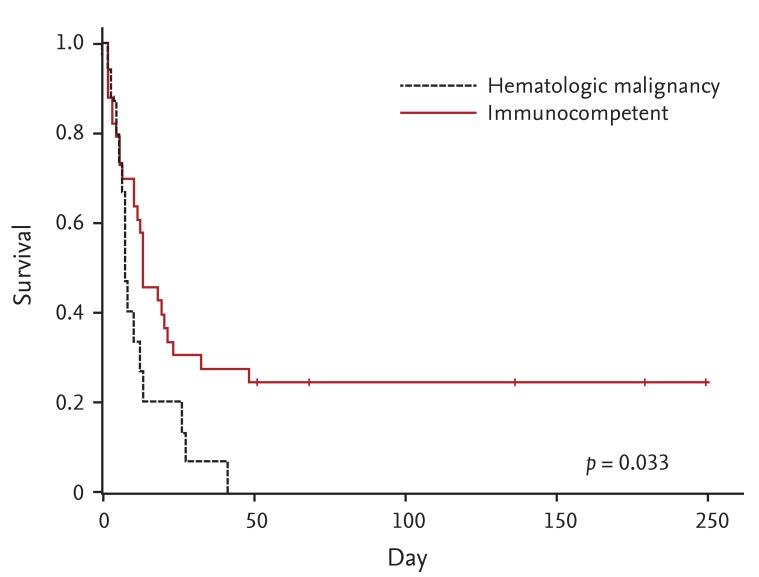
Table┬Ā1
Individual characteristics and outcomes of patients with hematologic malignancies
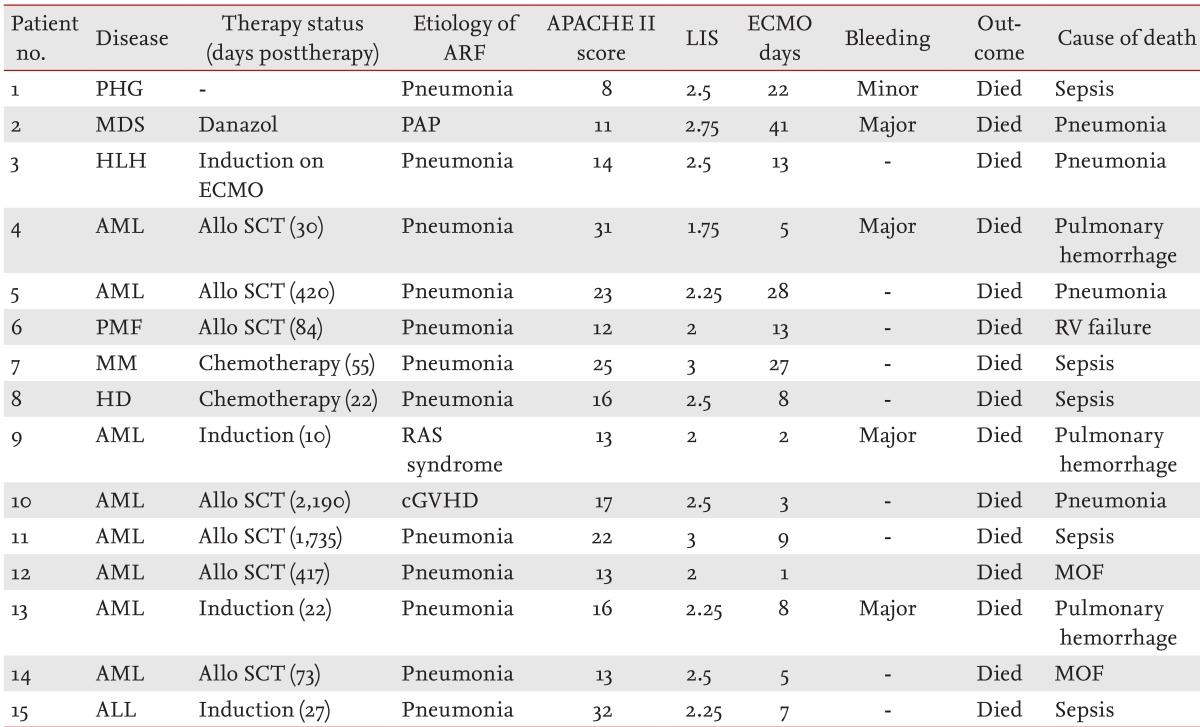
ARF, acute respiratory failure; APACHE, Acute Physiology and Chronic Health Evaluation; LIS, lung injury score, Murray score; ECMO, extracorporeal membrane oxygenation; PHG, panhypogammaglobulinemia; MDS, myelodysplastic syndrome; PAP, pulmonary alveolar proteinosis; HLH, hematophagocytic lymphohistiocytosis; AML, acute myelogenous leukemia; SCT, stem cell transplantation; PMF, primary myelofibrosis; MM, multiple myeloma; HD, Hodgkin's disease; RAS, retinoic acid syndrome; cGVHD, chronic lung graft versus host disease; MOF, multisystem organ failure; ALL, acute lymphoblastic leukemia.
Table┬Ā2
Clinical characteristics of patients with hematologic malignancies and immunocompetent controls who underwent ECMO
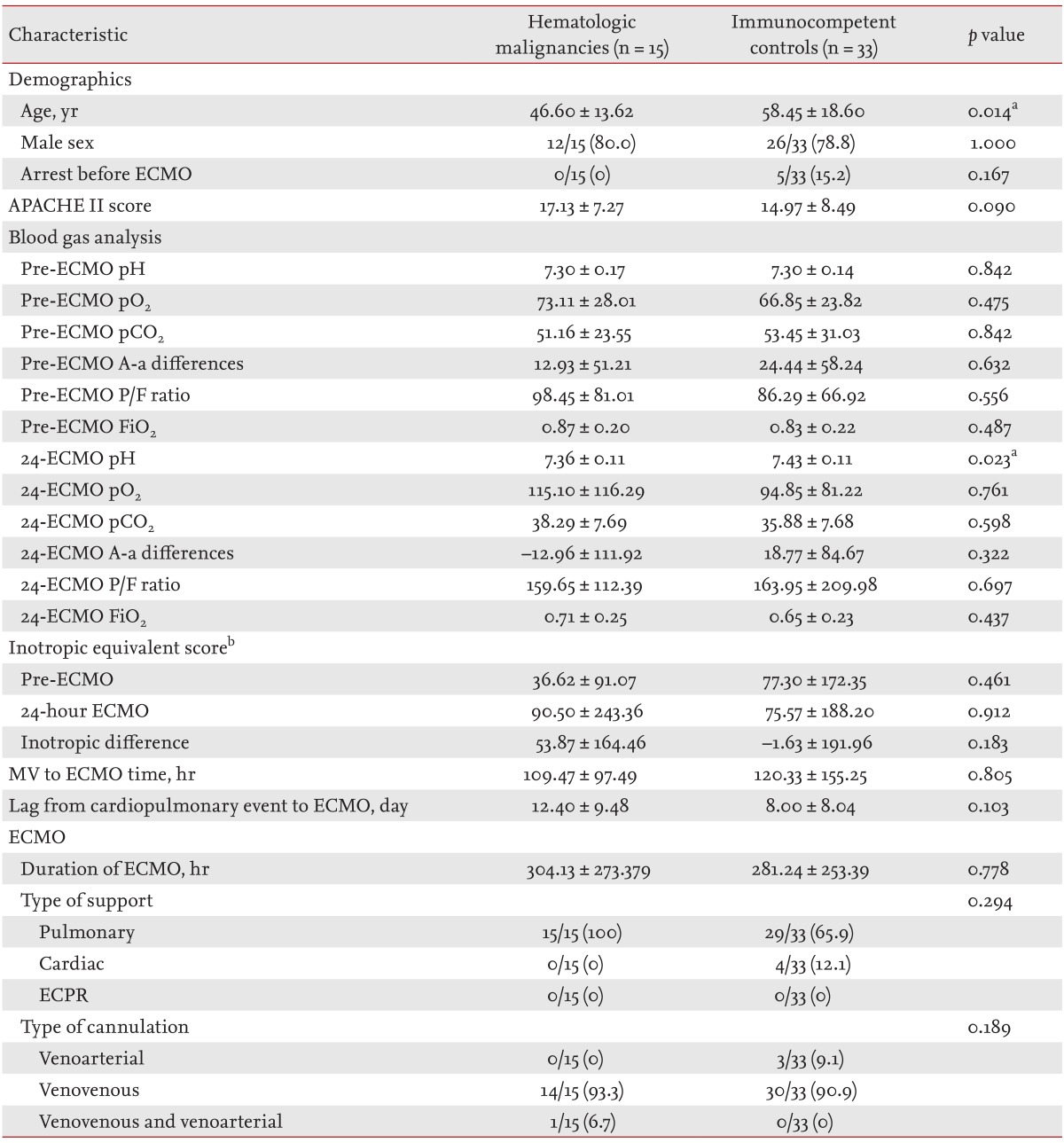
Values are presented as mean ┬▒ SD or number (%).
ECMO, extracorporeal membrane oxygenation; APACHE, Acute Physiology and Chronic Health Evaluation; pO2, oxygen partial pressure; pCO2, carbon dioxide partial pressure; A-a difference, alveolar-arterial Gradient; P/F ratio, the ratio of arterial oxygen concentration to the fraction of inspired oxygen; FiO2, the fraction of inspired oxygen; MV, mechanical ventilation; ECPR, extracorporeal life support for cardiopulmonary resuscitation.
aMann-Whitney U test.
bCalculated from the doses of dopamine + dobutamine (in ┬Ąg/kg/min) + [doses of epinephrine + norepinephrine + isoproterenol (in ┬Ąg/kg/min)] ├Ś 100 + dose of milrinone (in ┬Ąg/kg/min) ├Ś 15 [26].
Table┬Ā3
Comparison of survivors and non-survivors following ECMO
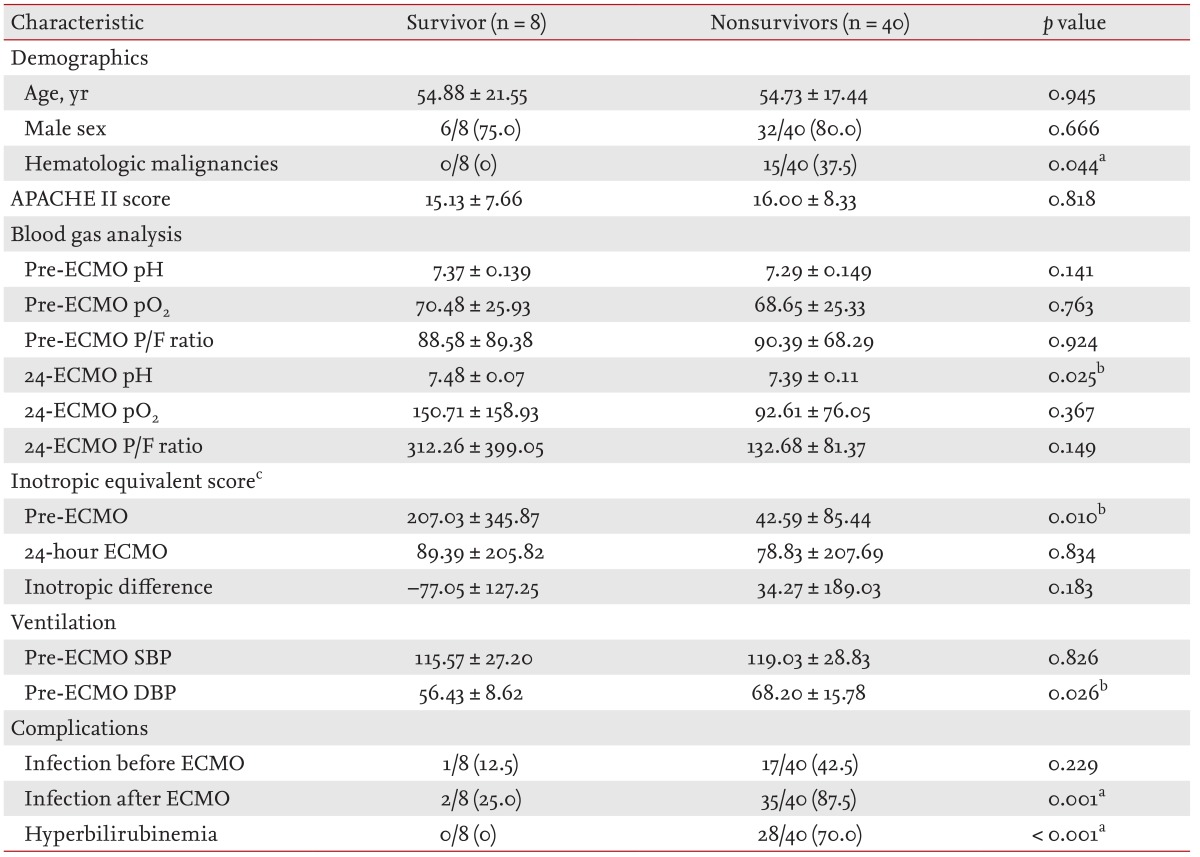
Values are presented as mean ┬▒ SD or number (%).
ECMO, extracorporeal membrane oxygenation; APACHE, Acute Physiology and Chronic Health Evaluation; pO2, oxygen partial pressure; P/F ratio, the ratio of arterial oxygen concentration to the fraction of inspired oxygen; SBP, systolic blood pressure; DBP, diastolic blood pressure.
aFisher exact test.
bMann-Whitney U test.
cInotropic equivalent score was calculated from the doses of dopamine + dobutamine (in ┬Ąg/kg/min) + [doses of epinephrine + norepinephrine + isoproterenol (in ┬Ąg/kg/min)] ├Ś 100 + dose of milrinone (in ┬Ąg/kg/min) ├Ś 15 [26].
Table┬Ā4
Clinical characteristics and outcomes ECMO in patients with hematologic malignancies and immunocompetent controls when matched for their APACHE II scores
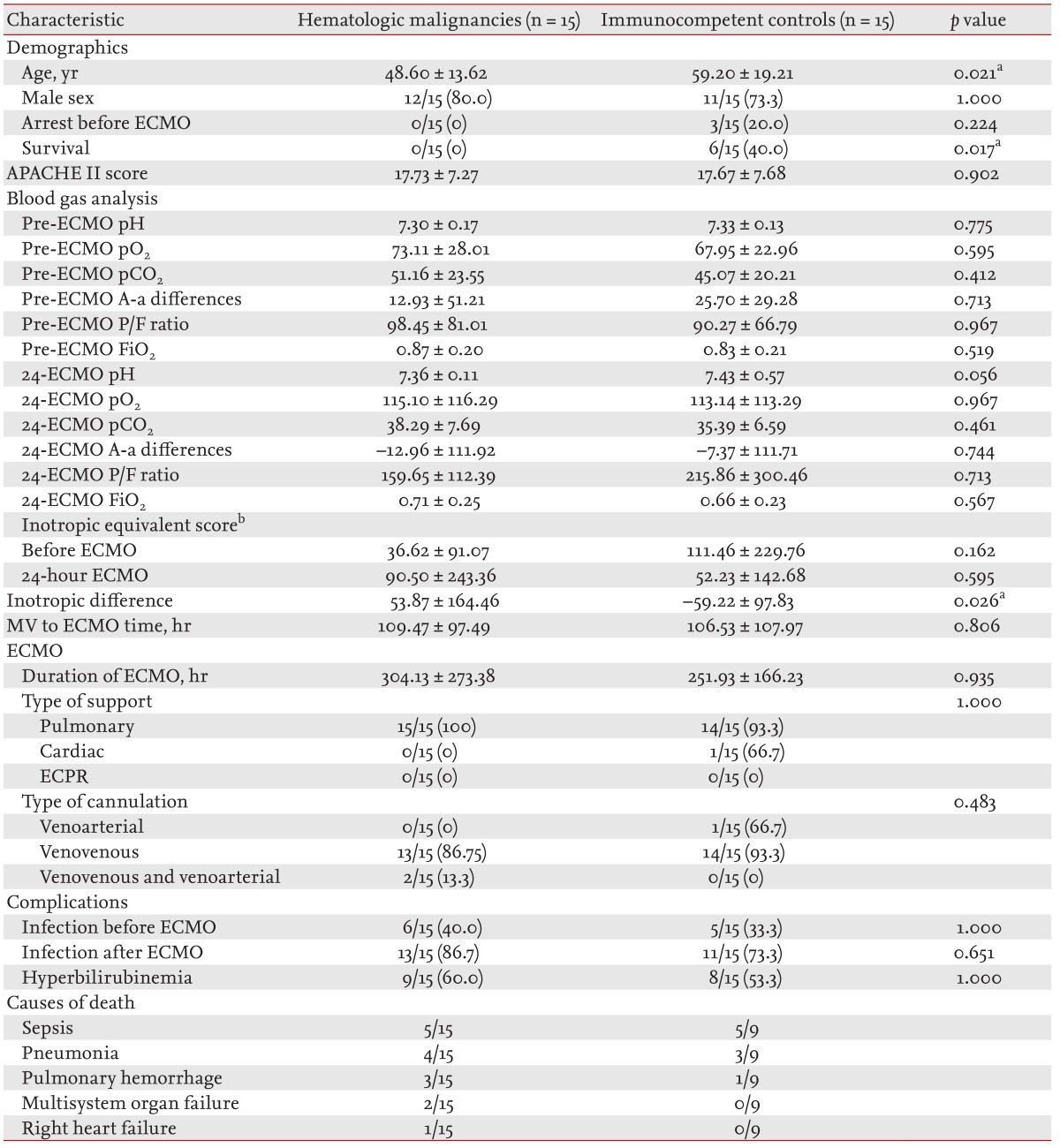
Values are presented as mean ┬▒ SD or number (%).
ECMO, extracorporeal membrane oxygenation; APACHE, Acute Physiology and Chronic Health Evaluation; pO2, oxygen partial pressure; pCO2, carbon dioxide partial pressure; A-a difference, alveolar-arterial gradient; P/F ratio, the ratio of arterial oxygen concentration to the fraction of inspired oxygen; FiO2, the fraction of inspired oxygen; ECPR, extracorporeal life support for cardiopulmonary resuscitation.
aMann-Whitney U test.
bInotropic equivalent score was calculated from the doses of dopamine + dobutamine (in ┬Ąg/kg/min) + [doses of epinephrine + norepinephrine + isoproterenol (in ┬Ąg/kg/min)] ├Ś 100 + dose of milrinone (in ┬Ąg/kg/min) ├Ś 15 [26].



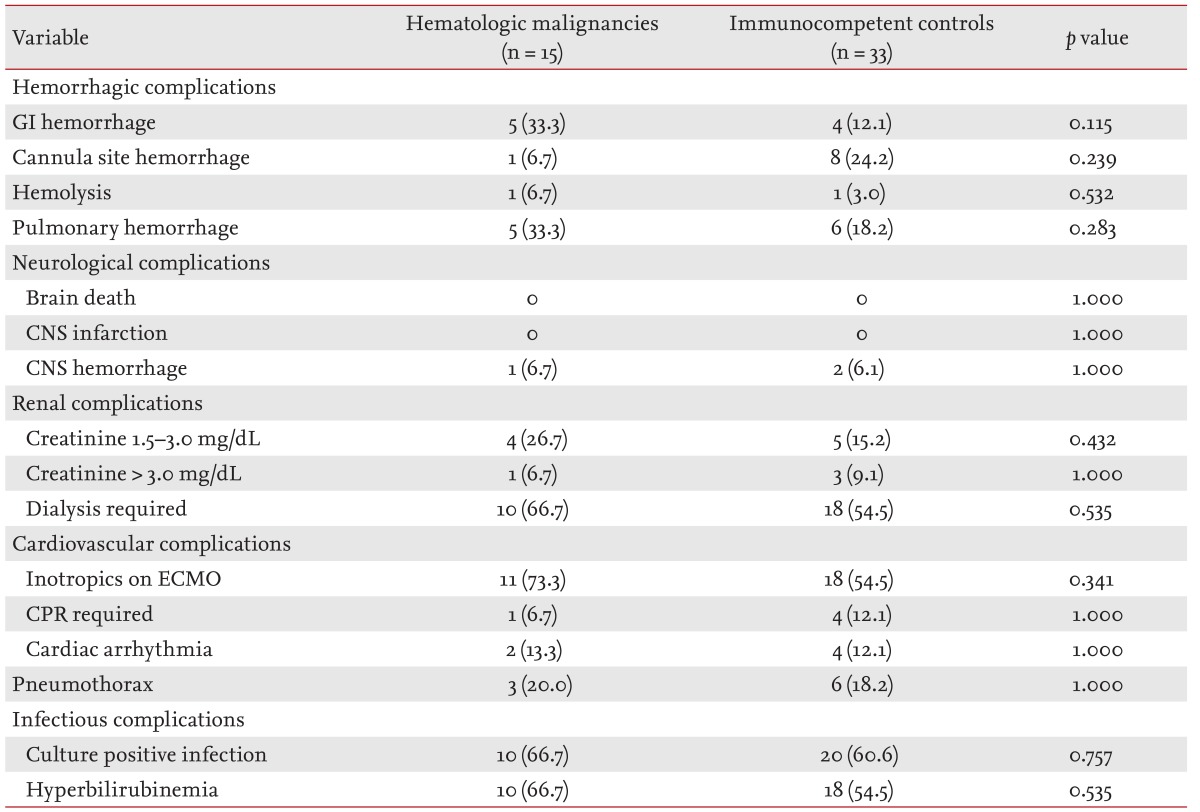
 PDF Links
PDF Links PubReader
PubReader ePub Link
ePub Link Full text via DOI
Full text via DOI Download Citation
Download Citation Print
Print



